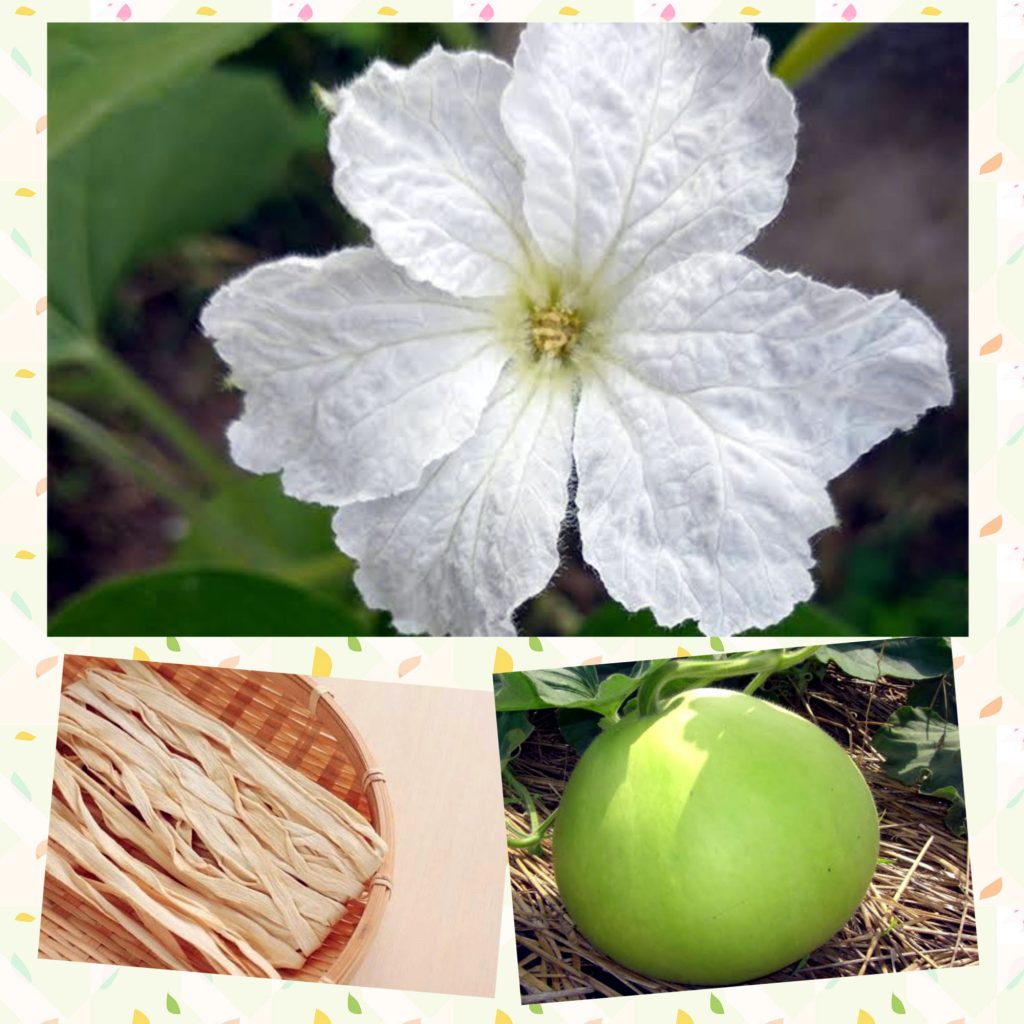
When I was watching NHK TV this morning, they showed the process of sun-drying ‘Mizuguchi Kanpyo’ (dried gourd strips). When it comes to the early summer scenery in Mizuguchi, it is said that nothing represents it better than the sight of Kanpyo drying. ‘Mizuguchi Kanpyo’ is a specialty product from Mizuguchi-cho, Koka City, and has been made since the Edo period. It is even depicted in Utagawa Hiroshige’s ukiyo-e series ‘The Fifty-three Stations of the Tokaido.’ Kanpyo is an essential ingredient for making rolled sushi, but it is also used in various other culinary forms. It may not be the star of the dish, but it is an indispensable ingredient with its unique taste and texture.
Interestingly, not many people know that Kanpyo is made from the fruit of the Yugao (evening glory plant). Asagao (morning glory), Hirugao (daylily), Yugao (evening primrose), and Yorugao (night blooming cereus), which all bloom around this time, have flowers that look quite similar, but only the Yugao belongs to the gourd family (Cucurbitaceae), while the other three are from the morning glory family (Convolvulaceae).
Speaking of Yugao, she is known as tragic woman in ‘The Tale of Genji.’ Although she appears only a few times in the story, she leave a lasting impression as delicate, graceful, and cheerful woman. Genji, captivated by the beauty of such woman, became infatuated with her and continued to cherish her memory even after her passing.
今朝もNHKテレビを見ていたら、「水口かんぴょう」の天日干しの様子が映し出されていました。水口の初夏の風物詩といえば、かんぴょう干し風景に尽きるといわれています。「水口かんぴょう」は江戸時代から作られている甲賀市水口町の特産品で、歌川広重の浮世絵「東海道五十三次」にも描かれています。かんぴょうと言えば、巻き寿司には欠かせないネタで、そのほかいろんな形で食膳にのります。お料理の主役ではないけれども、味といい、食感といい、欠かせない一品です。
そのかんぴょうが夕顔の実から作られると言うことは意外に知られていません。朝顔、昼顔、夕顔、夜顔とよく似た花がこの時期咲きますが、夕顔だけはウリ科の植物で、他の3つはヒルガオ科の植物です。
夕顔といえば、源氏物語に登場する薄幸の女性ですね。物語に登場する回数こそ少ないものの、佳人薄明を絵に描いた様な、印象に残る女性です。儚げながら可憐で朗らかな性格で、源氏は短い間であったけれども^_^彼女にのめりこみ、死後もその面影を追いました。
